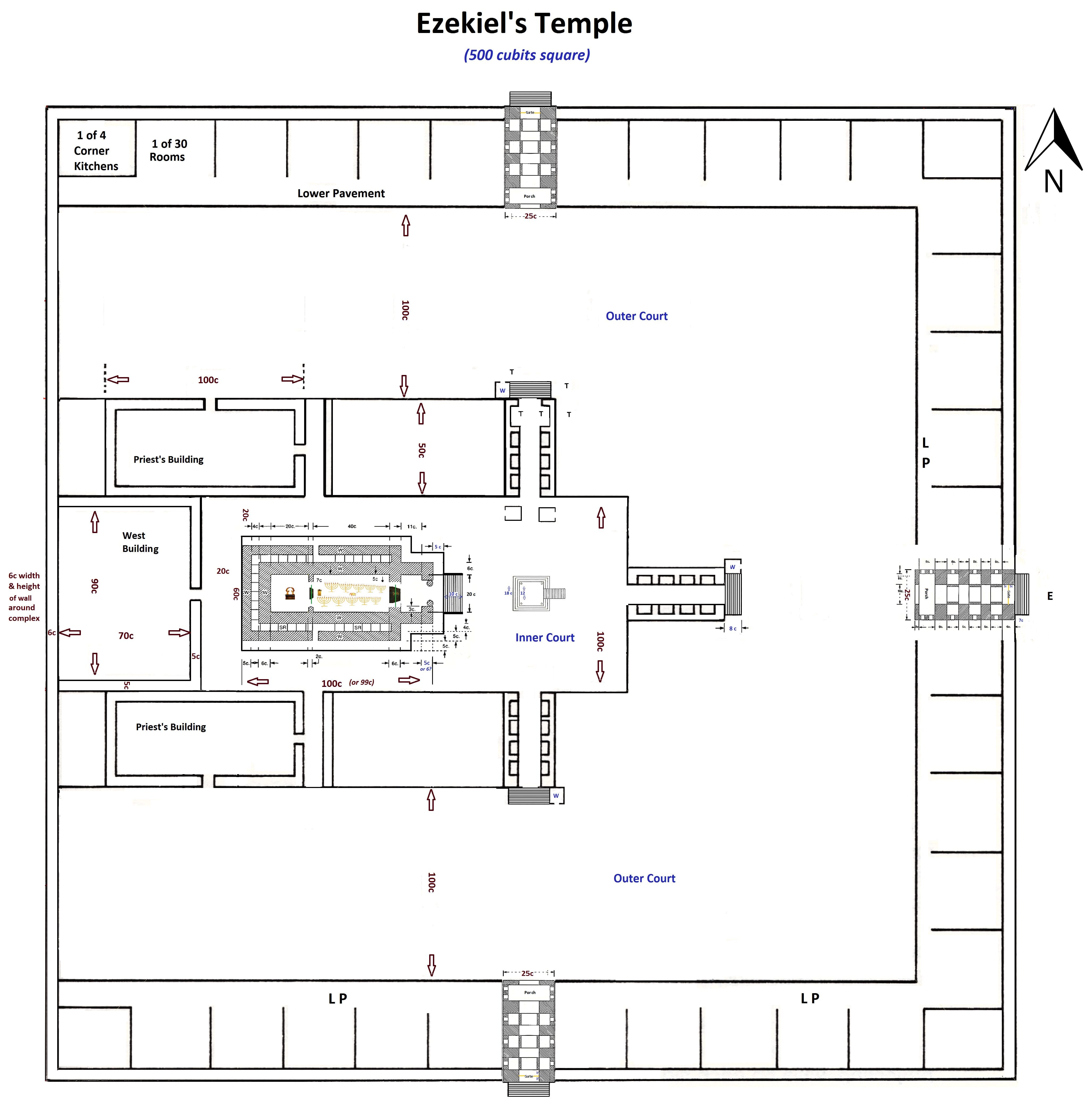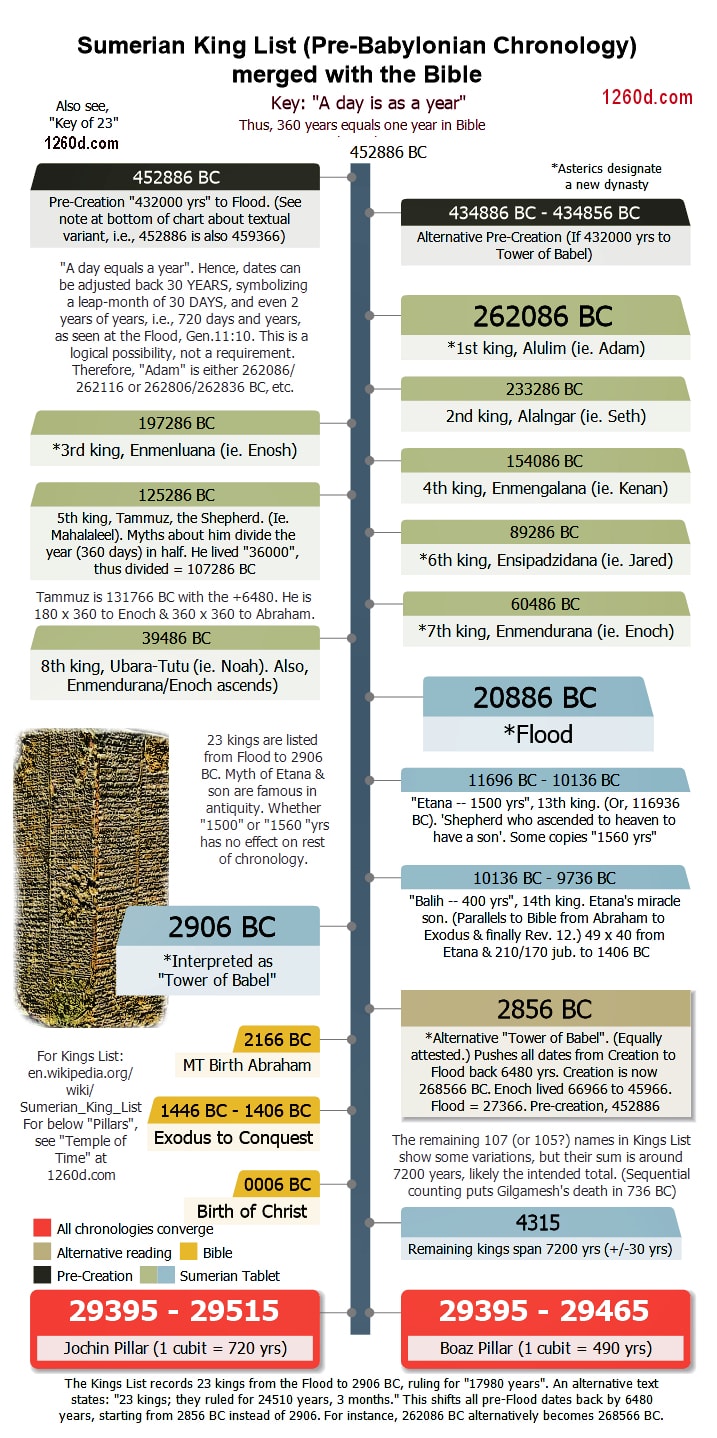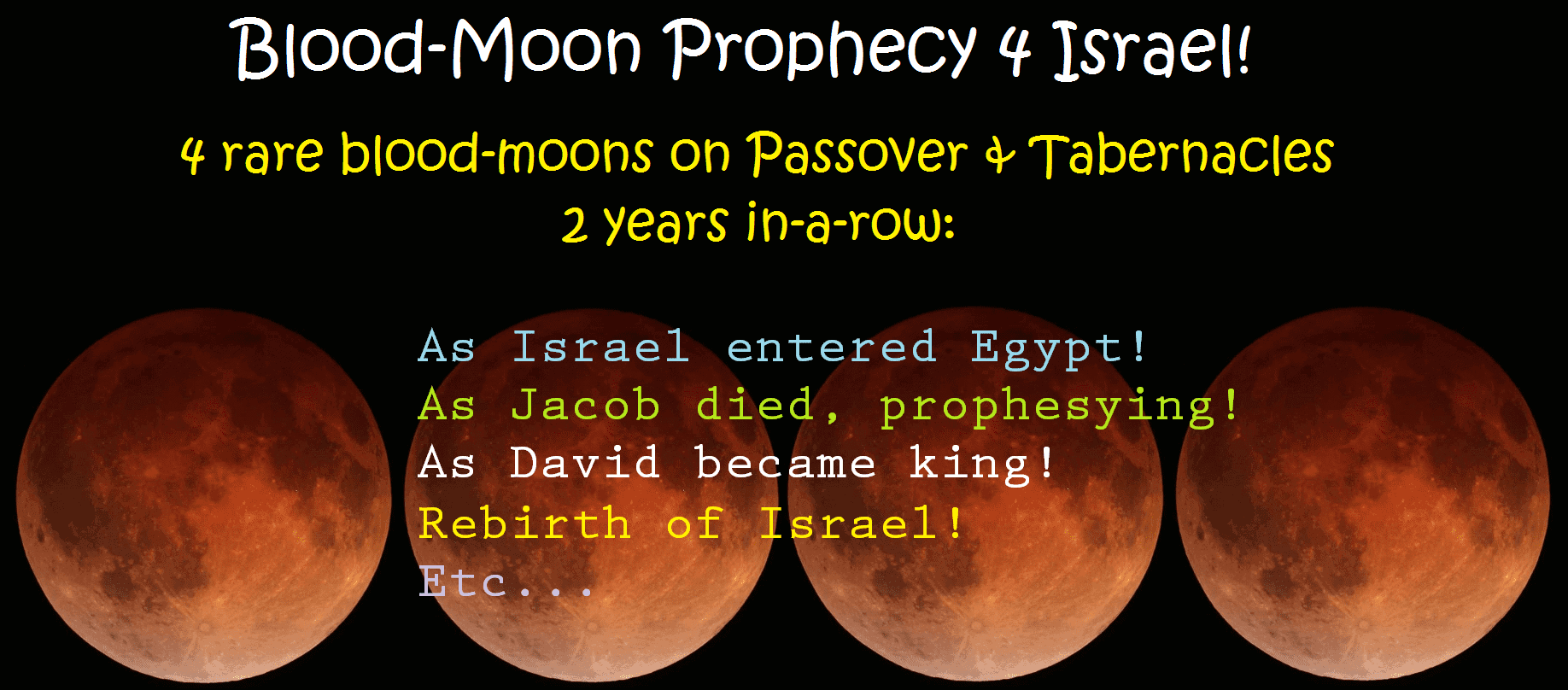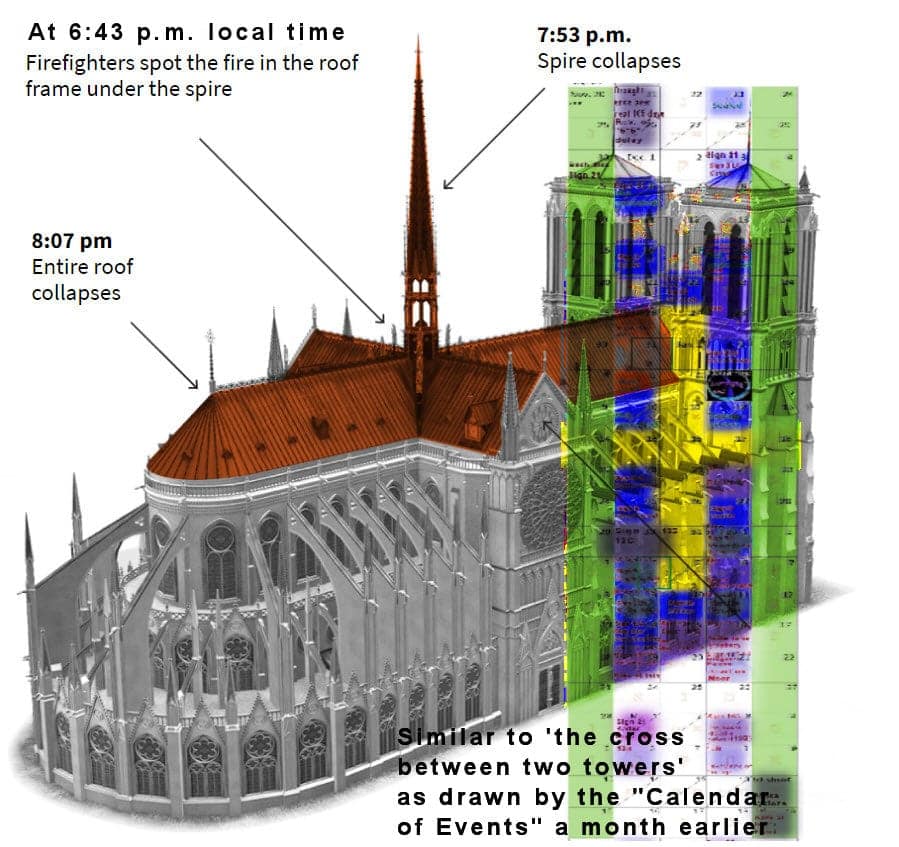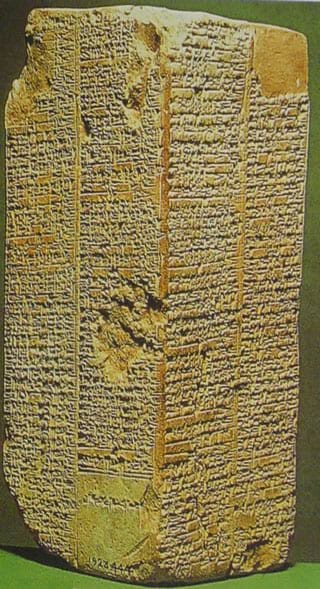
Moses’ Rod Swallows up the Sumerian King List
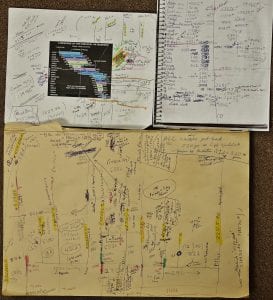
These charts are explained in the document “The Key of 23“.
See en.wikipedia.org/wiki/Sumerian_King_List
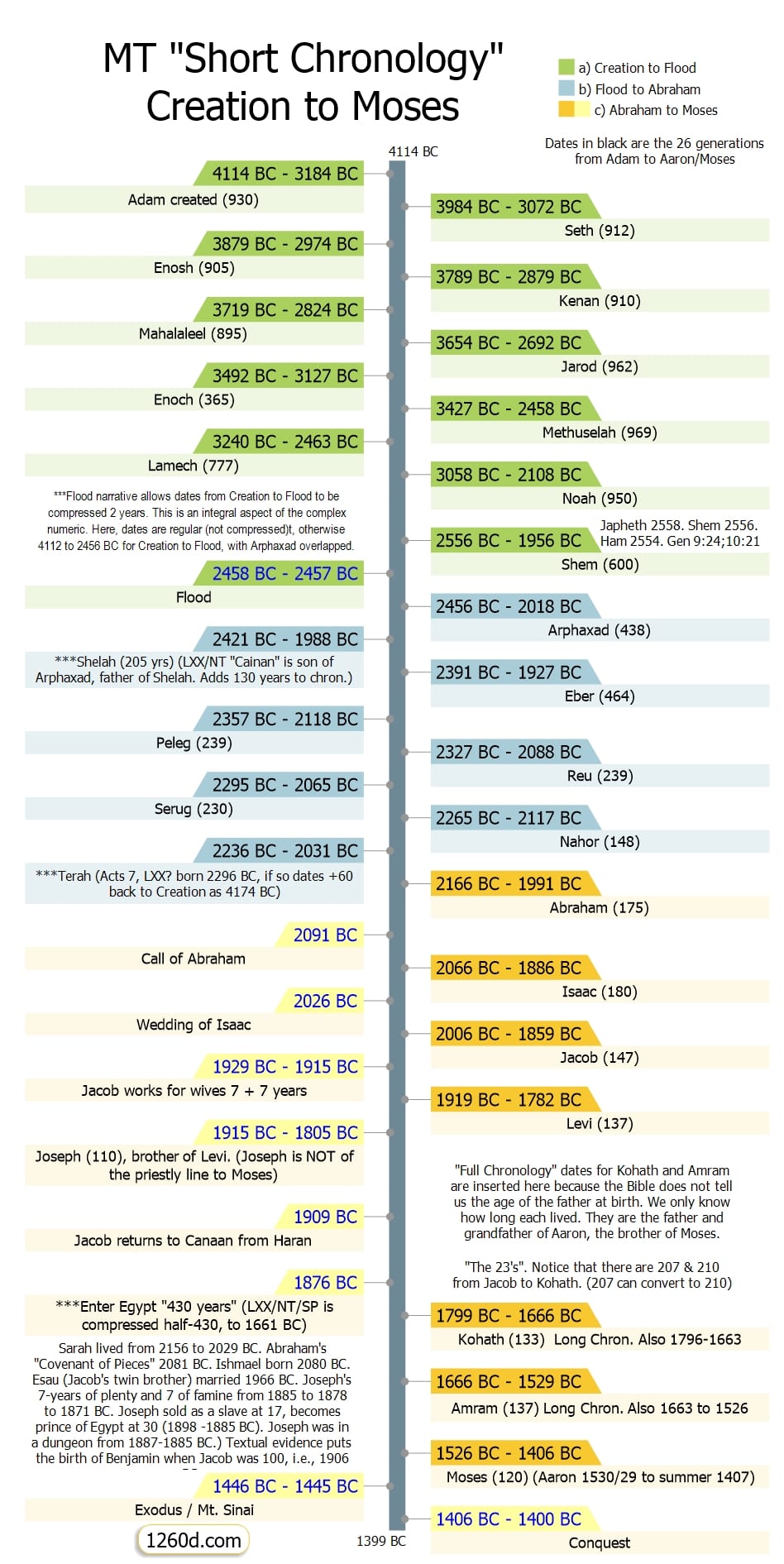
This is a complex article intended for more advanced students of Biblical chronology!
(Also see previous related article:
Blood-Moon Tetrads on Passover & Tabernacles. (Remains Relevant!)
Putting the Nephilim on Notice
The above is my rough work. This revelation is too important to keep putting off, waiting for some time to get to it. There is just too much happening worldwide, and so many other rods in the fire are awaiting publication. Perhaps others will eventually flesh it out. It’s a mystery that modern scholars, biblical and secular by the score, have tried to dis-cipher. This includes those in ancient times back, perhaps a hundred-thousand years.
But revelation comes from God, not mental acuity. By God’s grace, thirty years of previous study in related matters helped me understand this mystery.
Jesus holds the key to revelation, and He is the Key itself.
Why This is Important
This study is particularly important because this revelation sends a message to the fallen ones of ancient times — the Nephilim.
The Sumerian chronology closely parallels the chronology of the Bible fractal. It’s also in agreement with all previous studies.)
Publishing it now in rough form allows people to put “two-and-two” together for themselves (which can be an adventure). But more importantly, this is God’s declaration to fallen beings, released in this generation, that their doom is as much under God’s timing as their short (and partial) release is.
Multitudes of scholars (Babylonian and Biblical) over the past 4900 years have studied this chronology. Abraham and the patriarchs, down to Moses and then to the exile in Babylon (including Daniel), would have had an expert understanding of it.

I believe that the antediluvian Enoch had his hand in the Sumerian King List, too, at its foundation stages. The Book of Enoch ties in very well. (The Book of Enoch is likely best understood as a collection of oral traditions codified but largely erroneous over time, but with certain core truths kept intact by God.)
The prophecy in the Book of Enoch about the ‘4900 and 70,000 years to the release of the Nephilim’ is particularly relevant to our times and to 1000 years from now. {Remember that the Enochian calendar used a year of 360 days non-adjusted, 364, and 360 adjusted with leap months (i.e., 365). You can add to this the little-known 361-year too!}
The Pivotal Date: “First Rulers of Uruk”
What is the pivotal date from which all else is dated in the Sumerian King List (just as the date of the Exodus is crucial to all that lies before it in the Biblical list back to Adam)?
In the Sumerian Kings List, dating the “First Rulers of Uruk” is crucial. (I believe that this date corresponds to the “Dividing of the Nations” event, as recorded in the Book of Genesis.)
The pivotal date is 2906 BC (and 2856 BC).
(This includes ‘plus 30 years’ too, and to a lesser extent, at times, ‘less 30 years’, mainly due to the BC/AD mirroring effect. This 30 year is essentially due to the ancient principle that a day is as a year. The extra 30 years is as ‘one month’ of time and has its direct parallel in the 360 Calendar of the Prophets, where there is also a 30-day parallel. All things must be consistent on all levels — and there are a lot of levels! (This includes the mind-numbing complexity of the BC/AD mirror.)
Moreover, observe the minus “two-years” effect of the Genesis flood chronology too, which converts not only to 720 days but 720 years, too. However, 2906 and 2856 BC are the principal starting dates and agree with the Pillars-of-Time dates of AD 29515 and 29465, as discussed at length in the Blood-Moon Tetrad document published, Passover of 2015. )
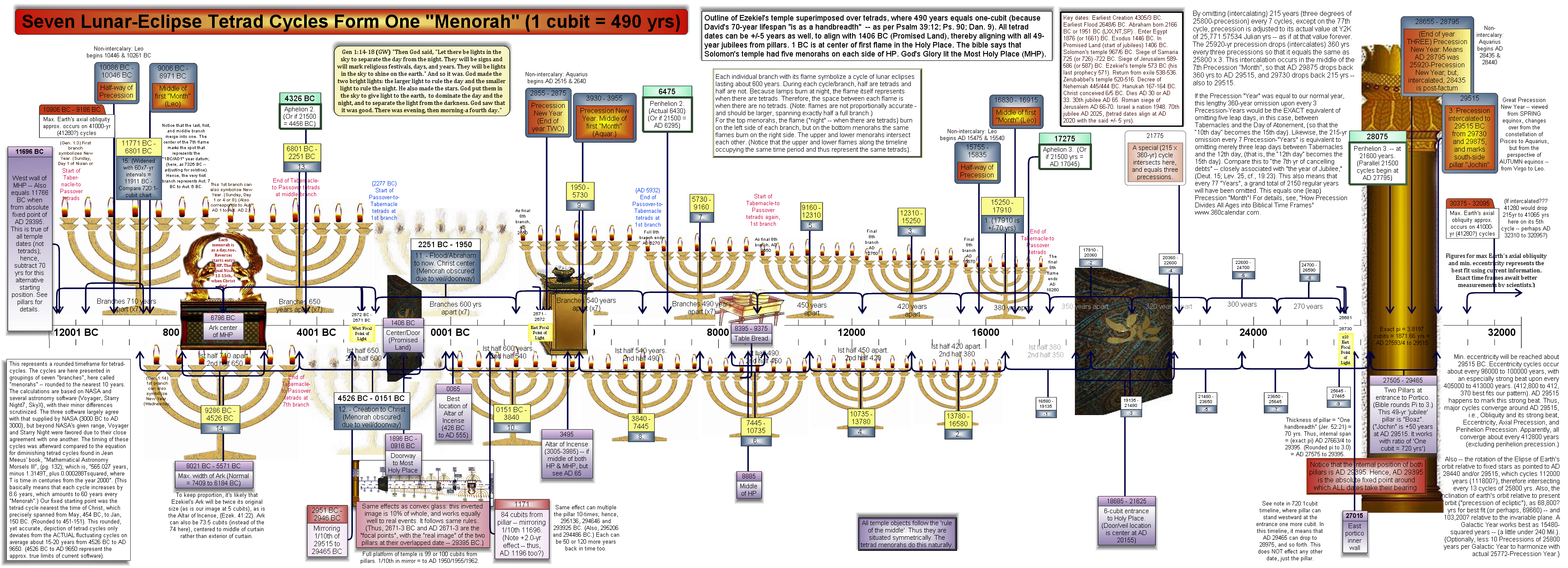
Therefore, this means that the Flood dates for the Sumerian King List are 20886 BC and 27366 BC. (And so forth, including the said ‘back another 720 years’ parallel dates for all. But the patterns that emerge even without these 720 years is enough to keep one occupied for months.)
Basic Outline of Kings List
The Sumerian Kings List is very long. (21 dynasties). By calculating back all the way to the end of the list (as if there were no overlaps), using the 2906 BC position, one comes to the end of the Dynasty of Isin, which yields the following dates due to some textual variations in the latter part of the list:
AD4326/9 or 4345/8 (and perhaps even AD 4746/9). (It, therefore, spans 7200 years, and the plus 30.)
“Alulim” (Ruler of Eridu) is Adam
Therefore, from the Sumerian creation at 262,086 BC (“After the kingship descended from heaven” and “Alulim” was created, which is the Sumerian equivalent of Adam), plus 10 Precession “Great Years” (259,200 years {2*360*360}) equals the said “Dividing of the Nations” (at about 2906/2556 BC), with another 20*360 years (7200) to complete the list.
Thus, from the Sumerian creation of 262,086 BC to the “Pillar of Time” (AD 29,515) are 540*540 years (810*360 years, which is 11.25 Precession “Great Years”). But from the 268,566 BC parallel date for creation (see chart), there are 298,080 years to the Pillar, which is 11.5 Precession “Great Years.” And so forth.
Both Kings Lists are Intended
(See Wikipedia and other websites.)
As said, the two main Sumerian King Lists slightly differ but are perfectly compatible. (“The Dynasty of Kish” is 17980 years, but also amounts to 24510 years according to some records.)
I am more interested in understanding what these chronologies mean than just trying to figure out the “real date.” To me, that’s irrelevant.
This is true even of the biblical Flood and Creation date. These were indeed actual events, but God has hidden the literal date from us and substituted it with a wealth of useful patterns far more conducive to understanding His ways in human affairs than mere static dates. The natural creation reveals the Creator’s methodologies. Therefore, true to Himself, think of biblical chronology prior to Moses (and especially Abraham) as information compacted into a small package, like DNA.
Study Began Purim, 2017
My study of the ancient Sumerian (Babylonian) chronology began at 1 pm, March 13, 2017 (which is Adar 15 — Purim).
Side note: The 20th anniversary of the heavenly signs. Note, Day-Year count as to 2025n AD. Including the extra biblical chronologies (as discussed later in this article), it essentially all came together in three weeks (April 3). On this day I understood the importance of the timing of when God revealed these things when I noticed the symbolic "day-year" for the first time (as set to to AD 2025), that is, symbolically as day-year 2907 to 2886 BC.
On May 2, 2017, I had a dream as to where the coordinates for the key heavenly portal was located: At "24 h and 36 min" of Precession, (i.e., 25th hour as jubilee). This yields the date AD 15540/15475. Study continued: Notice the Sumerian timeline also overlaps Baal Balance Bible Code, and on June 2, a revelation in Hebrew at ELS 6+6+6(*2) that declared, "Tammuz is weeping" (Hebrew, "Tammuz Bekah") as he is cast into the watery Abyss. On June 11, God impresses upon me to "leave this mountain", (that is, wrap up this study), thus spanning 90 days.
Biblical Chronology is Synchronized with Sumerian King List
The study of the Sumerian King List came in unison with the study of the genealogy of Moses. But just as the chronology of Sumer has been stretched out in the length of years, even so, the condensed chronology of Moses can also be stretched out like a serpent back into a rod. When stretched out, the Bible’s chronology reveals what is likely closer to the actual chronology of the events described. At any rate, the two methods of looking at the chronology of Moses dove-tail together.
Cryptic Elongated Chronology of Adam to Moses
In the Bible, we are only given a complete chronology of the age of when the patriarch had their offspring and when they died — only from Adam to Moses. After that, the genealogy breaks down in the Bible, and we only have a list of names often devoid of their age and when they had their offspring. Nevertheless, from Adam to Moses is still a very long list and comprises 26 or 27 generations.
What is a generation?
(Adam to Moses: Tallying their Lifespans)
A generation in the Bible can be the standard 40 (Moses), 70 (Enoch and King David), and 100 years (Abraham).
But a generation can also be, ‘when one dies.’ The Bible says concerning Moses’s very last “generation,” “And all that generation died.” (And that included Moses and Aaron.)
“The LORD was angry with Israel and made them wander in the wilderness for forty years until the entire generation that sinned in the LORD’s sight had died. (Numbers 32:13)
Also…
“Joseph died, and all his brothers and all that generation.” (Exodus 1:6)
Therefore, the normal way to calculate a generation is to add the years when a man had their first child. However, a secondary way (and cryptic) is to add the length of the age of the patriarch that represents that particular generation — tallying those generations end to end. The results produce patterns around the theme of the number seven (the number of creations), and this itself is self-evident proof of the intention of its Author.
12600 years to 14006 BC for the Creation of Adam
For example, The grand tally amounts to 12600 years from Adam to Moses (10*1260, or 360*35, see Rev. 12).
And the seven generations from Moses to Abraham (the third significant ‘new beginning’ in the complete genealogy from Adam to Moses) equals 3*7*7*7 years. These are but two examples. Enoch is particularly striking, using this method of calculating years in the genealogy.
The dates are significant too:
Arphaxad was born “one year” after the Flood (and therefore “two years” after the start of the Flood). His birth, therefore, informs us about the Flood of Noah. It was 4831n/4835t BC (when using this methodology).
When using this method of calculating total years in the genealogy, remember that the date of the death of a father will always be the same year as the date of the birth of their offspring. Therefore, Shem’s death (Noah’s son) is the same as the birth date of Arphaxad, Shem’s son. (And notice the Book of Genesis textual effect that necessitates the option of “one year” and “two years” back to 4836/7t as well).
4836 BC amounts to 70 jubilees to Moses’ death at the Conquest of Canaan in 1406 BC, which is when the Jubilees officially began, and the chronology ended! (“Seventy jubilees” equals 70*7*7 years.)
This means that unto the birth of Jesus in 6 BC, there are 4830 years, 4865 to His death, and 4900 to AD 65, which is the 30th jubilee from 1406 BC.
And AD 2025 amounts to 140 jubilees. (70 jubilees to 1406 BC, and another 70 to AD 2025.)
Do you see the pattern?
The numeric multiplies the regular genealogy by tenfold. Daniel 9 refers to 483, 486.5, and 490 years; we have here ten times that number to Christ. (4830, 4865, and 4900 years.)
Ten-fold equivalent dates in Sumerian King List
In the same way, the Sumerian dates for the flood and creation and ‘pre-creation’ mirror the regular Bible chronology, except ten-fold.
For example, the 27366 BC Sumerian Flood date is 12900 years to 14466 (ten times the 1290 of Daniel 12), and 25920 years to the 1446 Exodus. (25920 years is one precession of the equinox. Precession in both 2150 and 2160-year “months” units is key to understanding this mystery.) (See Blood-Moon Tetrads document for more related information, such as the all-important “Pillar” date of 29515 AD.)
Aaron’s 3.5-years
(Note: The genealogy through Aaron is also critical. It adds 3.5 years because Moses’ brother, Aaron, was 3.5 years older than Moses.)
Thus, from Adam to Moses, there are 12600 years end to end, but through Aaron, there amount 12603.5 years. (12600 is, of course, 10 * 1260. )
(Add to this “460 years” when including the optional extra Cainan of NT, LXX, SP).
Beginning from 1406 BC for the conquest (and Moses’ death) yields…
- 1406 BC + 12600 = 14006n BC (or 14010t).
With extra “Cainan,” add 460 more years…
- 1406 BC + 12600 + 460 = 14466n BC (or 14470t).
Note how the dates are mirroring their counterparts on a times-ten basis. And this is just the tip of the iceberg. (I.e., the Exodus was in 1446 BC. Compare this with 14466 BC, etc.)
Idealistic Genealogy
I also revisited at the time of my study into the Sumerian King List the idealistic methodology of viewing the 26 generations from Adam to Moses (27 when including the Cainan after the flood. Cainan had his son at “130”, and Cainan lived “460 years”, see NT, LXX, SP). Simply put, each generation is accounted as 40, 70, and 100 years from 1406 BC, when Moses died, back to Adam.
Please notice that 1406 BC is 1400 years before Christ’s birth in 6 BC. 1400 years is the lowest common multiple of 40, 70, and 100, and is therefore compatible with Christ and with the before-mentioned 12600 years back to 14006 BC, which amounts to 1400*9 years.
Example of Idealistic Generation (using 100 years as a generation)
Example: 1406 BC plus 26 generations of 100 years (2600 years) brings us to 4006 BC, which is 4000 years to Christ but 10,000 years to 14006 BC.
- 10,000 years is 100*100, whereas 4000 is 40*100.
As you can see, these are extraordinarily workable and flexible time frames.
Flexibility of the extra “460 years” of Cainan
The “460 years” is ideally suited to the overall structure of the Bible chronology and the Sumerian King List because 460 years is 168000 days on the 360 calendar, and 460 is also 30 years away from 430 and 490 years. These are all important biblical time frames. This makes 460 years ideally suited as an add-on to the basic chronology of 12600 years from Moses to Adam.
I will improve this document and include proper time charts when the Lord makes a way.

For more on the Summerian dates using the above dateline, see, www.1260-1290-days-bible-prophecy.org/1260_days-bible-prophecy-numbers-ch-3a.htm
See previous related article: Blood-Moon Tetrads on Passover & Tabernacles. (Remains Relevant!)
